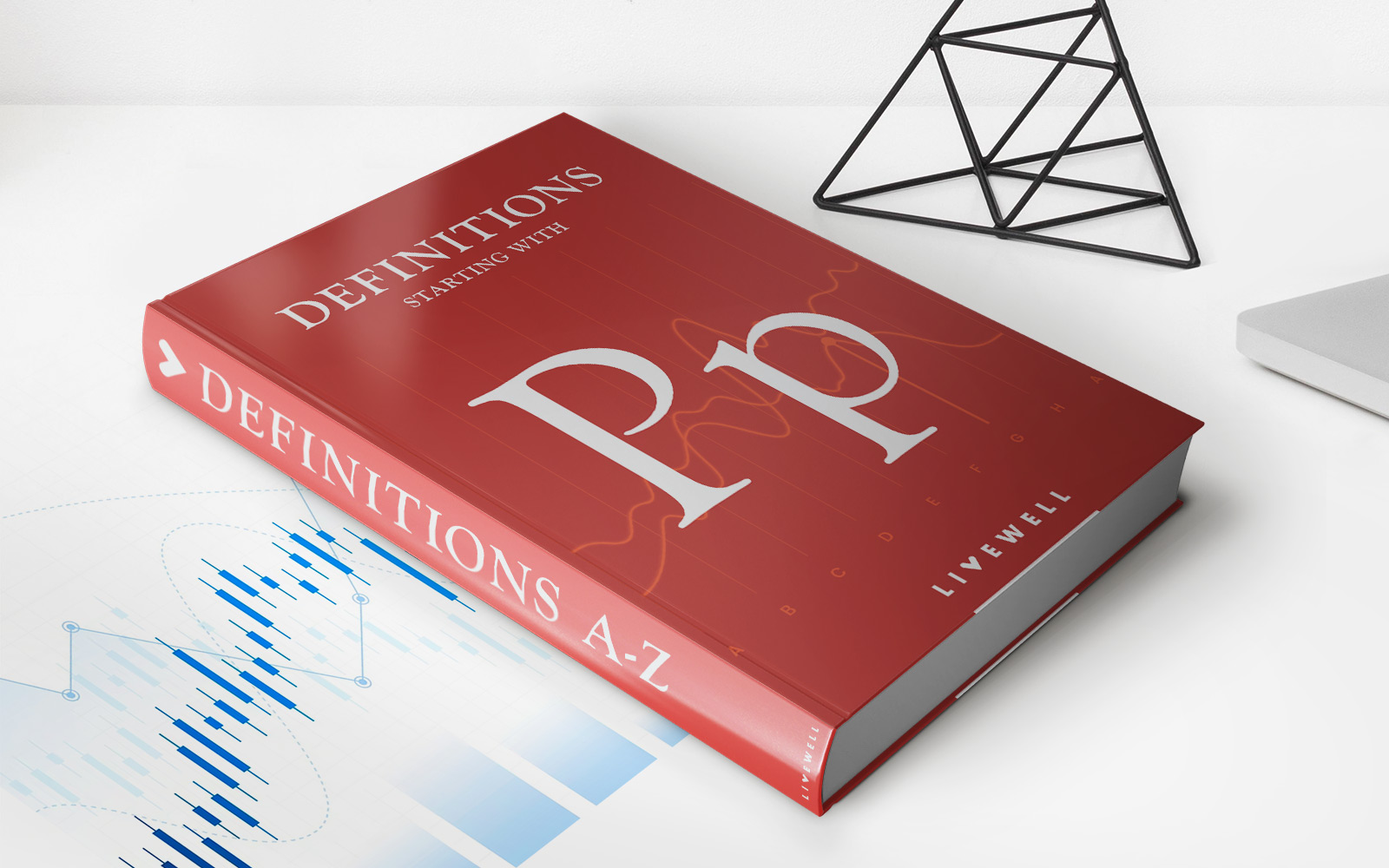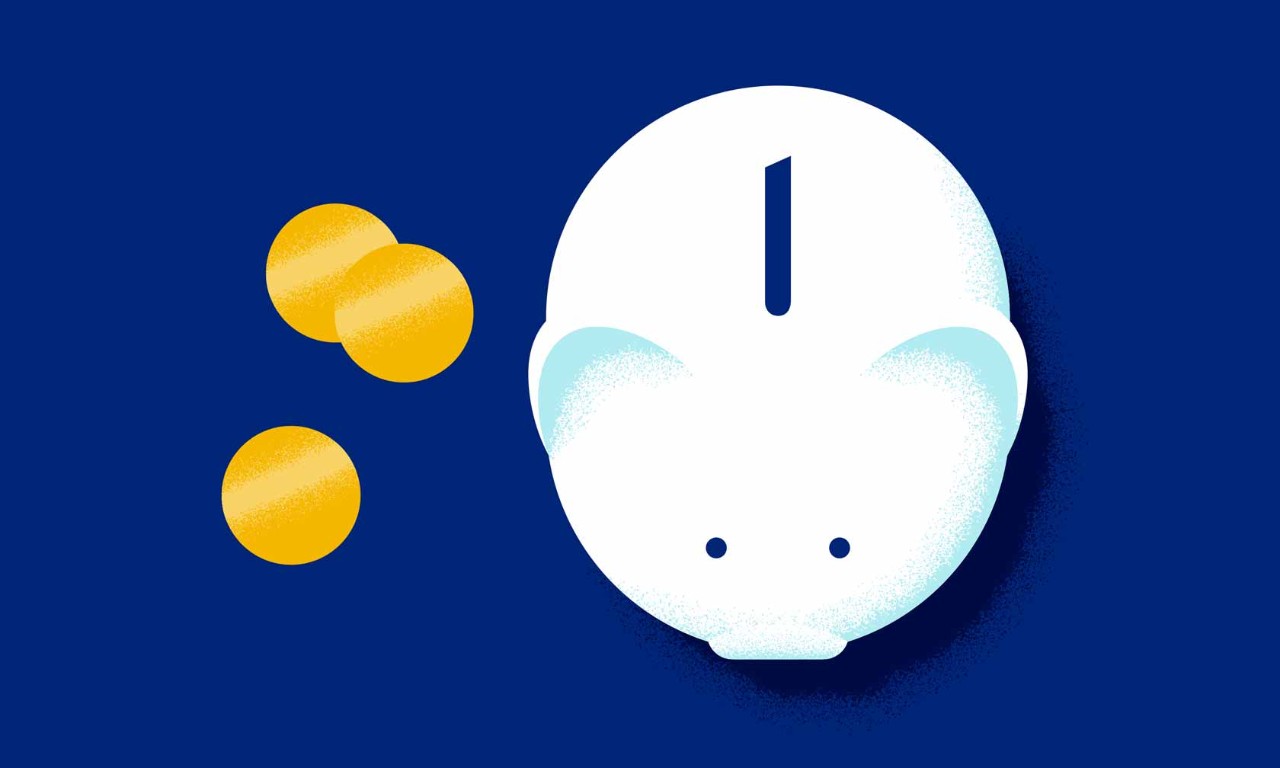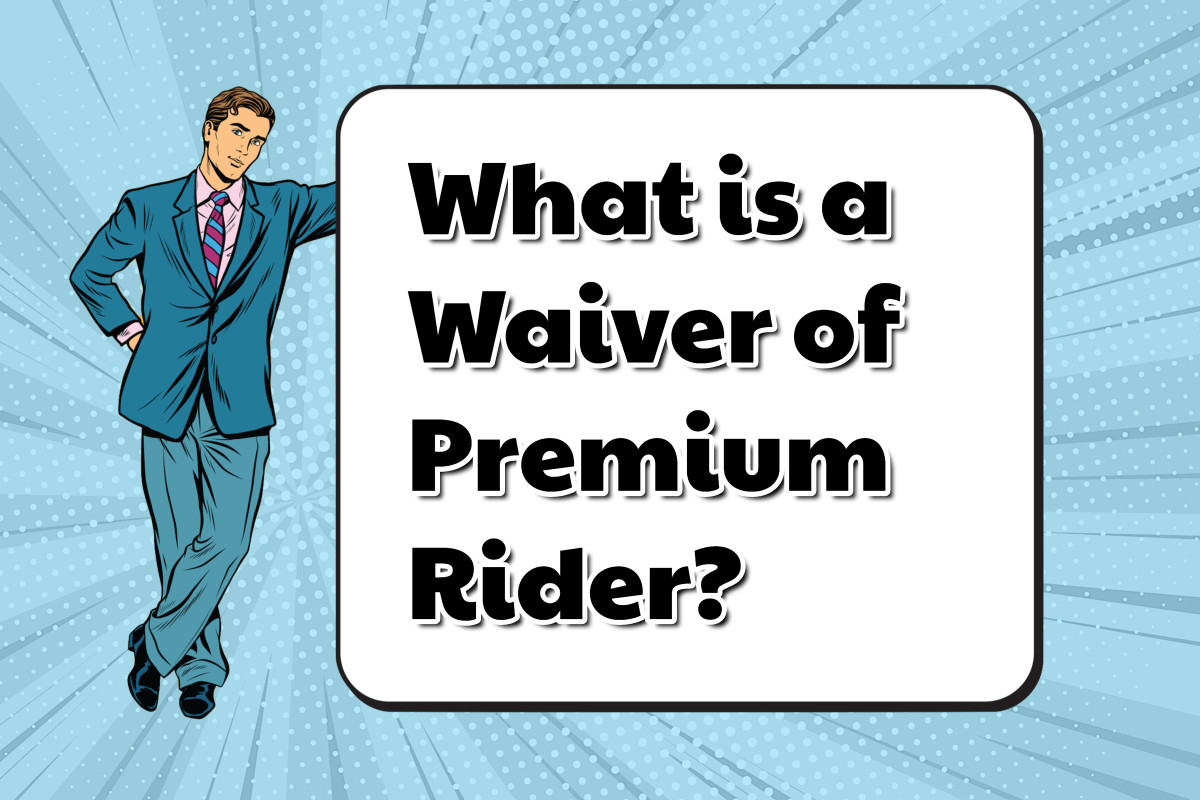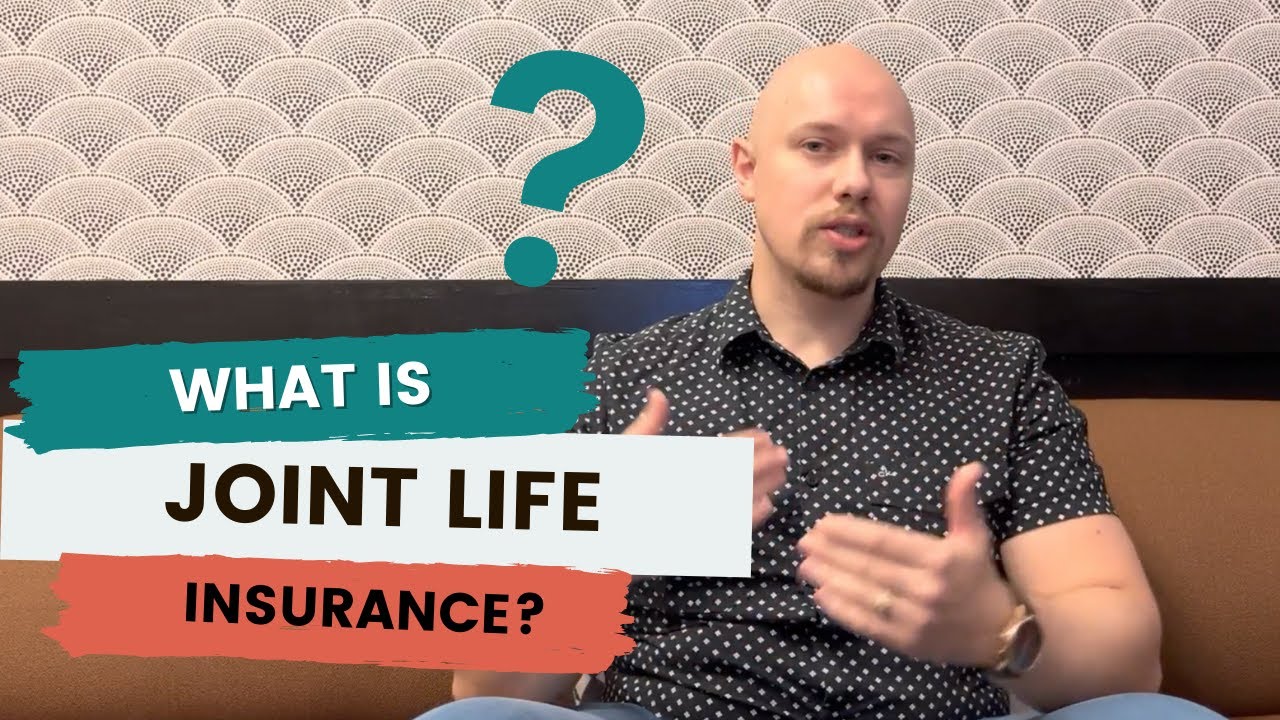Home>Finance>A Permanent Life Insurance Policy With Policyowner-Paid Premiums


Finance
A Permanent Life Insurance Policy With Policyowner-Paid Premiums
Modified: February 21, 2024
Looking for a secure and reliable way to manage your finances? Discover the benefits of a permanent life insurance policy with policyowner-paid premiums. Secure your financial future today!
(Many of the links in this article redirect to a specific reviewed product. Your purchase of these products through affiliate links helps to generate commission for LiveWell, at no extra cost. Learn more)
Table of Contents
- Introduction
- Overview of Permanent Life Insurance
- Definition of a Policyowner-Paid Premium
- Importance of Policyowner-Paid Premiums
- Benefits of a Permanent Life Insurance Policy with Policyowner-Paid Premiums
- Factors to Consider when Choosing a Policy with Policyowner-Paid Premiums
- Comparison with Other Life Insurance Options
- Common Myths and Misconceptions about Policyowner-Paid Premiums
- Tips for Choosing the Right Permanent Life Insurance Policy
- Conclusion
Introduction
When it comes to financial planning, life insurance is a key component that provides security and peace of mind for individuals and their families. While there are various types of life insurance policies available, a permanent life insurance policy with policyowner-paid premiums offers unique benefits and long-term coverage.
In this article, we will explore the concept of policyowner-paid premiums and shed light on the advantages of choosing a permanent life insurance policy with this payment structure. We will also address common misconceptions and provide tips for selecting the right policy for your specific needs.
Life insurance is an essential financial tool that protects your loved ones in the event of your passing. It ensures that they are financially secure and able to cover expenses such as mortgages, debts, education costs, and daily living expenses. While term life insurance provides coverage for a specific period, a permanent life insurance policy offers lifelong protection.
Permanent life insurance policies, as the name implies, provide coverage for the entirety of one’s life, as long as the policyowner continues to pay the premiums. These policies not only provide a death benefit but also accumulate a cash value component over time. This cash value can be accessed during the policyholder’s lifetime and can serve as a source of liquidity for various purposes such as supplementing retirement income, funding educational expenses, or covering emergency expenses.
One unique feature of a permanent life insurance policy is the concept of policyowner-paid premiums. Unlike other forms of life insurance where premiums can be paid by a third party, policyowner-paid premiums require the policyholder to pay the premiums themselves. This arrangement offers greater control and flexibility in managing the policy’s financial aspects.
Throughout this article, we will delve into the importance and benefits of a permanent life insurance policy with policyowner-paid premiums. By understanding these advantages and considering various factors, you will be able to make an informed decision when choosing the right policy to protect your loved ones and secure your financial future.
Overview of Permanent Life Insurance
Permanent life insurance is a type of life insurance that provides coverage for the entire lifetime of the insured, as long as the policy premiums are paid. Unlike term life insurance, which offers coverage for a specific period, permanent life insurance offers lifelong protection.
One of the key features of permanent life insurance is the cash value component. As the policyholder pays premiums, a portion of the premium is allocated to the cash value, which grows over time on a tax-deferred basis. This cash value can be accessed by the policyholder during their lifetime and can be used for various purposes.
Permanent life insurance policies come in various forms, including whole life insurance, universal life insurance, and variable life insurance. Each type offers different features and benefits, allowing individuals to choose a policy that aligns with their financial goals and needs.
Whole life insurance is the most traditional form of permanent life insurance, providing a guaranteed death benefit and a fixed premium amount. The cash value of a whole life policy grows at a guaranteed rate, ensuring steady accumulation over time.
Universal life insurance offers more flexibility in premium payments and death benefit amounts. With universal life insurance, policyholders have the option to adjust their premiums and death benefits according to their changing financial situation.
Variable life insurance, on the other hand, allows policyholders to invest a portion of their premiums into various investment options. The cash value of a variable life policy fluctuates based on the performance of these investments, offering potential for higher returns.
Permanent life insurance provides not only a death benefit but also valuable living benefits. These benefits can include the ability to borrow against the cash value, access to funds for retirement income, and tax advantages such as the ability to withdraw cash value on a tax-free basis.
When considering permanent life insurance, it is important to assess your financial goals, risk tolerance, and budget. Consulting with a financial advisor or insurance specialist can help you determine the best type of permanent life insurance policy to meet your specific needs.
Definition of a Policyowner-Paid Premium
A policyowner-paid premium refers to the payment responsibility of the policyholder in a life insurance policy. In a permanent life insurance policy with policyowner-paid premiums, the policyholder is responsible for paying the premiums to keep the policy in force.
Unlike other forms of life insurance where premiums can be paid by a third party, such as an employer or a trust, policyowner-paid premiums require the policyholder to personally cover the cost of the premiums. This arrangement gives the policyholder greater control and ownership over their policy, as they are directly involved in its financial management.
Policyowner-paid premiums can be paid in various ways, such as annually, semi-annually, quarterly, or monthly, depending on the terms of the policy. The premium amount is determined at the time of policy issuance and remains fixed throughout the policy’s duration.
It is important to note that policyowner-paid premiums are separate from any additional premiums that may be paid for riders or additional benefits attached to the policy. These additional premiums could be paid by the policyholder or by a third party, depending on the specific arrangement.
By being responsible for paying the premiums, the policyholder retains control over their policy and ensures its continuity. Failure to pay the premiums on time may result in the policy lapsing, leading to a loss of coverage and potential forfeiture of accumulated cash value.
Policyowner-paid premiums offer flexibility in terms of payment frequency and the ability to make additional payments to accelerate cash value growth. Some permanent life insurance policies also allow policyholders to reduce or skip premium payments if the cash value within the policy is sufficient to cover the cost of insurance.
When considering a permanent life insurance policy with policyowner-paid premiums, it is important to budget for the premium payments and ensure that they can be consistently met over the long term. The financial commitment involved in policyowner-paid premiums should be evaluated based on personal financial circumstances and goals.
By understanding the definition and implications of policyowner-paid premiums, individuals can make informed decisions regarding their life insurance coverage and ensure financial security for themselves and their loved ones.
Importance of Policyowner-Paid Premiums
Policyowner-paid premiums play a crucial role in the management and sustainability of a permanent life insurance policy. Understanding the importance of policyowner-paid premiums is essential when considering the long-term benefits and financial security provided by these policies.
1. Control and Ownership: When policyholders are responsible for paying the premiums, they have greater control and ownership over their policy. This allows them to actively participate in managing the financial aspects of their life insurance coverage.
2. Premium Consistency: By regularly paying the premiums, policyholders ensure the continuous coverage and financial stability of their policy. Failure to pay the premiums on time may result in the policy lapsing, leaving individuals without the protection they need.
3. Cash Value Accumulation: Policyowner-paid premiums contribute to the accumulation of cash value within the policy. This cash value can serve as a source of liquidity and financial flexibility, providing policyholders with options for accessing funds during their lifetime.
4. Living Benefits: Permanent life insurance policies with policyowner-paid premiums offer valuable living benefits. These benefits can include the ability to borrow against the cash value, access to funds for retirement income, and the potential for tax advantages.
5. Long-Term Financial Security: By diligently paying the premiums, policyholders ensure that their loved ones are financially protected in the event of their passing. Permanent life insurance policies with policyowner-paid premiums provide a death benefit that can help cover expenses and provide for the future needs of beneficiaries.
6. Flexibility and Customization: Policyowner-paid premiums offer flexibility in terms of payment frequency and the ability to make additional payments. This allows policyholders to tailor their premium payments according to their financial circumstances and goals.
7. Transparency and Awareness: Being responsible for paying the premiums encourages policyholders to actively monitor their policy’s performance and remain aware of its financial status. This promotes a better understanding of the coverage provided and helps individuals make informed decisions about their insurance needs.
Policyowner-paid premiums are a critical aspect of permanent life insurance policies. By recognizing their importance and fulfilling the financial commitment associated with these premiums, individuals can ensure the long-term protection and financial well-being of themselves and their loved ones.
Benefits of a Permanent Life Insurance Policy with Policyowner-Paid Premiums
Choosing a permanent life insurance policy with policyowner-paid premiums offers several advantages that can provide financial security and peace of mind. Let’s explore some of the key benefits:
1. Lifelong Coverage: A permanent life insurance policy with policyowner-paid premiums provides coverage for the entire lifetime of the insured. This means that as long as the premiums are paid, the policy remains in force, offering protection and financial security for loved ones.
2. Accumulation of Cash Value: Policyowner-paid premiums contribute to the accumulation of cash value within the policy. Over time, the cash value grows on a tax-deferred basis, providing a potential source of funds that can be accessed during the policyholder’s lifetime.
3. Living Benefits: Permanent life insurance policies with policyowner-paid premiums offer valuable living benefits. These benefits can include the ability to borrow against the cash value, access to funds for retirement income, and the potential for tax advantages.
4. Flexibility in Premium Payments: Policyowner-paid premiums provide flexibility in terms of payment frequency. Policyholders can choose to make annual, semi-annual, quarterly, or monthly premium payments, allowing them to align their premium payment schedule with their cash flow and budget.
5. Supplemental Retirement Income: The accumulated cash value in a permanent life insurance policy can be used to supplement retirement income. Policyholders may choose to withdraw funds or take out policy loans to provide an additional source of financial support during their retirement years.
6. Tax Advantages: Policyowner-paid premiums offer potential tax advantages. The growth of cash value is tax-deferred, meaning that policyholders do not pay taxes on the accumulation of cash value until funds are withdrawn or the policy is surrendered.
7. Death Benefit: Permanent life insurance policies with policyowner-paid premiums provide a death benefit to beneficiaries upon the passing of the insured. This death benefit can help cover expenses such as funeral costs, outstanding debts, mortgages, and provide financial support for loved ones.
It’s important to consider these benefits when choosing a life insurance policy. By opting for a permanent life insurance policy with policyowner-paid premiums, individuals can enjoy lifelong coverage, accumulation of cash value, and access to living benefits that can enhance financial security and meet their long-term financial needs.
Factors to Consider when Choosing a Policy with Policyowner-Paid Premiums
When selecting a permanent life insurance policy with policyowner-paid premiums, it’s important to carefully evaluate various factors to ensure that you make an informed decision. Consider the following factors:
1. Financial Goals: Determine your financial goals and how the life insurance policy fits into your overall financial plan. Consider whether you are primarily seeking death benefit protection, cash value accumulation, or a combination of both.
2. Premium Affordability: Assess your budget and evaluate the affordability of the premium payments. Ensure that you can comfortably meet the premium obligations throughout the policy’s duration to avoid a lapse in coverage.
3. Type of Permanent Life Insurance: Understand the different types of permanent life insurance policies available, such as whole life, universal life, and variable life. Each type offers different features and benefits, so choose the one that aligns with your financial goals and risk tolerance.
4. Policy Cash Value: Consider the projected growth of the policy’s cash value over time. Evaluate how quickly the cash value will accumulate and if it meets your expectations and financial objectives.
5. Policy Riders and Additional Benefits: Explore the riders and additional benefits available with the policy. These may include options for accelerated death benefits, long-term care benefits, or disability income riders. Assess whether these additional features align with your needs.
6. Policy Flexibility: Evaluate the flexibility of the policy in terms of premium payment options, the ability to adjust coverage amounts, and the potential to make additional premium payments to accelerate cash value accumulation.
7. Policy Dividends and Crediting Rates: If considering a participating whole life insurance policy, examine the history of dividends and the crediting rates offered by the insurance company. Favor companies with a track record of consistent dividends and competitive crediting rates.
8. Financial Strength of the Insurance Company: Assess the financial strength and reputation of the insurance company issuing the policy. Look for companies with strong ratings from independent rating agencies to ensure they have the ability to meet their financial obligations.
9. Professional Guidance: Consider seeking advice from a financial advisor or insurance specialist who can provide personalized guidance based on your specific financial situation and goals. They can help you navigate the options and choose the policy that best suits your needs.
By carefully considering these factors, you can make an informed decision when selecting a permanent life insurance policy with policyowner-paid premiums. Remember to review the policy terms, ask questions, and ensure that the chosen policy aligns with your financial objectives and provides the level of protection and benefits you desire.
Comparison with Other Life Insurance Options
When evaluating life insurance options, it’s important to compare a permanent life insurance policy with policyowner-paid premiums to other types of life insurance to determine which one best suits your needs. Let’s compare it with other popular options:
1. Term Life Insurance:
- Term life insurance provides coverage for a specific term, such as 10, 20, or 30 years.
- It is typically more affordable than permanent life insurance.
- However, it does not include a cash value component and the coverage expires at the end of the term.
- Term life insurance is a suitable choice for those who need coverage for a specific period, such as when raising young children or paying off a mortgage.
2. Whole Life Insurance:
- Whole life insurance provides lifelong coverage and includes a cash value component.
- Premiums for whole life insurance are generally higher than term life insurance.
- It offers a guaranteed death benefit and a fixed premium amount.
- Whole life insurance can grow cash value over time, which can be accessed through withdrawals or policy loans.
- This type of policy is suitable for those seeking lifelong coverage with a predictable premium and the ability to build cash value.
3. Universal Life Insurance:
- Universal life insurance provides flexibility in premium payments and offers adjustable death benefits.
- Policyholders can adjust premium amounts and coverage levels to fit their changing financial circumstances.
- The cash value grows on a tax-deferred basis and can be accessed during the policyholder’s lifetime.
- Universal life insurance is suitable for those who desire flexibility in premium payments and death benefit options.
4. Variable Life Insurance:
- Variable life insurance allows policyholders to invest a portion of their premiums in various investment options.
- The cash value of a variable life policy fluctuates based on the performance of these investments.
- This type of policy offers potential for higher returns but also carries higher investment risk.
- Variable life insurance is suitable for those with a higher risk tolerance and a desire for potential investment growth within their life insurance policy.
When comparing these options, consider your financial goals, risk tolerance, and budget. Evaluate how the policyholder-paid premiums fit into your long-term financial plan, the desired coverage length, the need for a cash value component, and the flexibility offered by each policy. Consulting with a financial advisor or insurance specialist can help you make an informed decision based on your specific needs.
Common Myths and Misconceptions about Policyowner-Paid Premiums
Policyowner-paid premiums in permanent life insurance policies are often subject to various myths and misconceptions. It’s important to debunk these misunderstandings to make informed decisions. Let’s address some common myths:
1. Myth: Policyowner-paid premiums are too expensive.
Reality: While policyowner-paid premiums may be higher than premiums for term life insurance, they provide lifelong coverage and the potential for cash value accumulation, offering long-term value for the policyholder.
2. Myth: The cash value grows too slowly.
Reality: The growth rate of the cash value depends on various factors, such as the policy type, premium amount, and time. Policyholders can discuss projected growth rates with their insurance provider and evaluate whether it meets their financial objectives.
3. Myth: The cash value is difficult to access.
Reality: Policyholders can access the cash value through withdrawals or policy loans, subject to certain terms and conditions. However, it’s important to manage these withdrawals carefully to maintain the policy’s death benefit and avoid potential tax implications.
4. Myth: Policyowner-paid premiums lock you into long-term commitments.
Reality: While policyowner-paid premiums require ongoing payments to maintain coverage, policyholders have flexibility in terms of premium payment options and the ability to adjust coverage amounts or make additional premium payments. Moreover, some policies offer the option to reduce or skip premium payments under certain conditions.
5. Myth: Policyowner-paid premiums are unnecessary if you have other financial resources.
Reality: Life insurance provides a unique financial safety net, ensuring that your loved ones are protected and financially secure in the event of your passing. It offers a level of security that other financial resources may not be able to provide.
6. Myth: You don’t need life insurance if you’re young and healthy.
Reality: Life insurance is often most affordable and easier to obtain when you are young and healthy. Having life insurance early on helps secure coverage and potential benefits at favorable rates, and also provides peace of mind for unforeseen circumstances.
It’s crucial to separate fact from fiction when considering policyowner-paid premiums in permanent life insurance. By understanding the realities and dispelling these myths, individuals can make well-informed decisions that protect their financial future and provide for their loved ones.
Tips for Choosing the Right Permanent Life Insurance Policy
Choosing the right permanent life insurance policy with policyowner-paid premiums requires careful consideration of various factors. Here are some tips to help you make an informed decision:
1. Determine your financial goals: Clarify your objectives for obtaining life insurance. Whether it’s to provide financial security for your loved ones, accumulate cash value, or supplement retirement income, understanding your goals will guide your policy selection.
2. Evaluate your budget: Assess your financial situation and determine how much you can afford to allocate towards life insurance premiums. Consider the long-term affordability of the policyowner-paid premiums to ensure you can continue to pay them consistently.
3. Understand the different policy types: Familiarize yourself with the various types of permanent life insurance available such as whole life, universal life, and variable life. Each type has its own features, benefits, and potential risks, so choose the one that aligns with your needs.
4. Consider the cash value component: Evaluate the projected growth potential of the policy’s cash value. Assess factors such as the interest rate, dividends, and investment options, if applicable, to determine how the policy can contribute to your financial goals.
5. Review policy riders and additional benefits: Explore any additional features or riders available with the policy. Assess if these benefits align with your needs, such as options for accelerated death benefits, long-term care, or disability income.
6. Work with a trusted financial advisor: Seek the guidance of a financial advisor or insurance specialist who can provide personalized advice based on your specific financial situation and goals. They can help you navigate the complexities of policyowner-paid premiums and provide recommendations tailored to your needs.
7. Research the insurance provider: Evaluate the financial strength and reputation of the insurance company issuing the policy. Look for companies with strong ratings from independent rating agencies to ensure they have the ability to fulfill their financial obligations.
8. Read and understand the policy terms: Carefully review the policy contract, terms, and conditions. Pay attention to details such as premium payment schedules, surrender charges, and policy loan provisions. Clarify any questions or concerns with your insurance provider.
Choosing the right permanent life insurance policy is a significant financial decision. By considering these tips and seeking professional guidance, you can make a well-informed choice that aligns with your financial goals and protects your loved ones for the long term.
Conclusion
Choosing a permanent life insurance policy with policyowner-paid premiums is a crucial step in securing financial protection for yourself and your loved ones. By understanding the concept of policyowner-paid premiums and evaluating the benefits and factors involved, you can make an informed decision that aligns with your financial goals and circumstances.
Permanent life insurance policies provide lifelong coverage, accumulate cash value, and offer valuable living benefits such as retirement income and potential tax advantages. Policyowner-paid premiums give you control and ownership over your policy, allowing you to actively manage its financial aspects.
When selecting a policy, consider factors such as financial goals, premium affordability, policy type, cash value accumulation, flexibility, and the reputation of the insurance company. Consulting with a financial advisor or insurance specialist can provide valuable insights and guidance throughout the decision-making process.
Remember to separate common myths and misconceptions from the realities of policyowner-paid premiums. Dispel any misunderstandings and ensure that you have accurate information to make the best choice for your future.
Choosing the right permanent life insurance policy with policyowner-paid premiums requires thoughtful consideration and careful evaluation. By applying the tips outlined in this article and seeking professional advice, you can make a well-informed decision that provides financial security and peace of mind for you and your loved ones.














